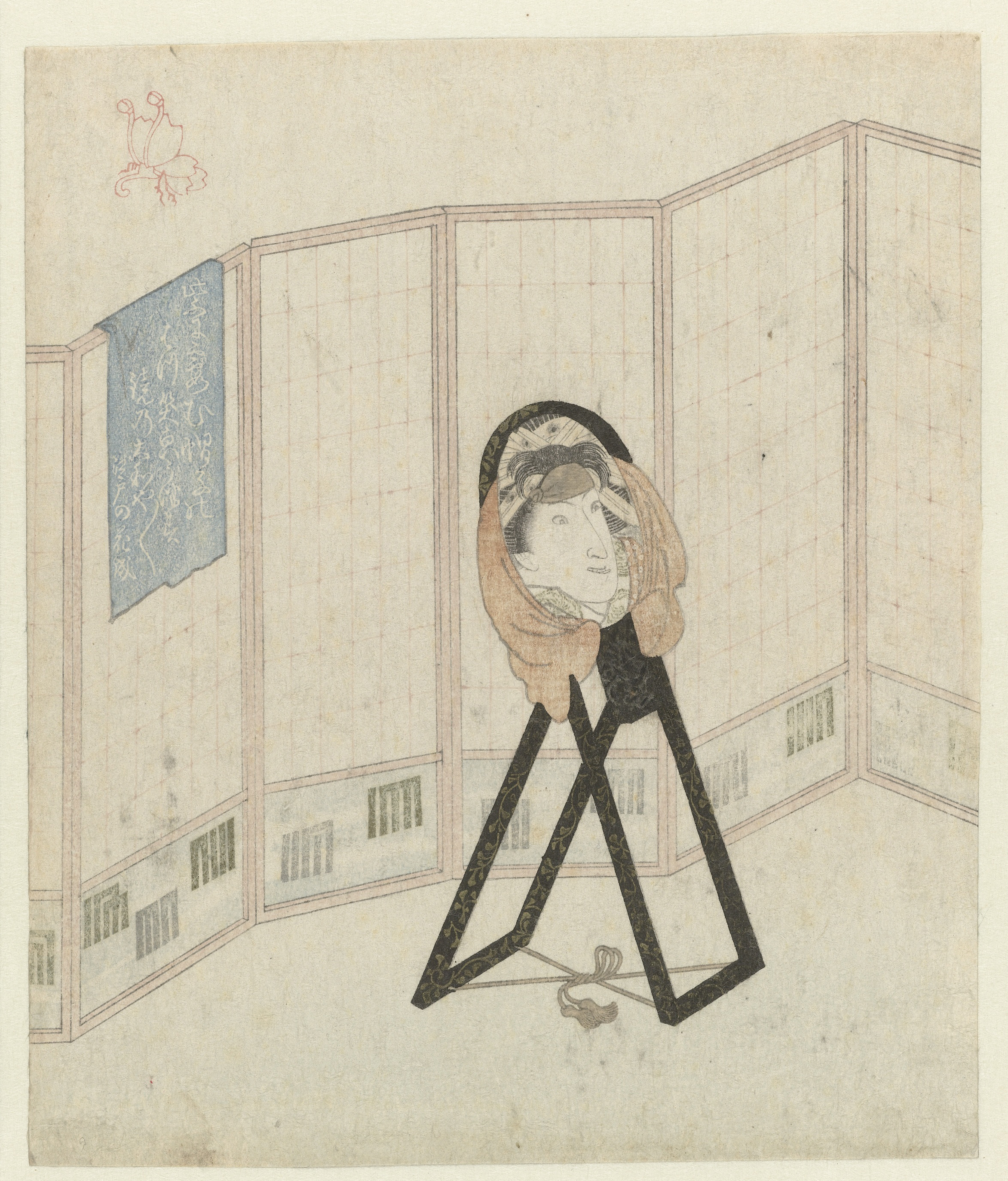The Genji-mon comprise of 54 variations of crests which reference to a specific chapter in the Tale of Genji novel, the first novel written in the world, by Murasaki Shikibu. My preferred translation is Waley's 1923-33 edition, given its pretty rooted in gay culture.[1] The Genji Tale was exceedingly popular in Japan from the 12th century on, (a western equivalent would be Chaucer) and was heavily referenced as a body of work in design.
The 54 mon are usually horizontal or vertically strips, and every mon has 5 of these strips in different alignments which make up the base of the mon, and with additional horizontal cross strip/s. Originally the crests were said to derive from incense burning ceremonies in Kudo (The art of incense|香道) in the Asuka period (538-710).[2]
I'm indubitably Incensed into inclined iconoclastic-puns irregularly.
Kumiko (incense-comparing-game|組香) began with the tale of Ms.Ayama-no-mae and her love Yorimasa. Ayama was a court lady who passed one day by Yorimasa, another court noble. Yorimasa, enraptured by just a glimpse Ayama, went to her ladyship Toba-in, who had Ayama as her lady-in-waiting. Toba had Yorimasa draft a 5 line poem, each line a 'ko', the whole meaning found in the Kumiko or poetry game.[3] As part of the autumnal Kumiko a sitter burned 25 packs of incense each of which had its own symbol, producing 5 different smells in different combinations, and to achieve the end goal the contestants of the game had to guess what each smell was supposed to be, by writing 5 poems, or 25 ko (lines). This produces the link to calligraphic waka poetry which later down the line gave way from 25 ko to 54 ko and this became the Genji-kou (Genji-incense-game|源氏香).[4]
Genji supposedly had a thing for incense himself, probably little-trees fresh pine scent I'd imagine. A lot of hubbub or Ko-Awase (incense-comparison|香あわせ) was made of what Genji and other smelled of like apparently in the Heian era. I mean my mum makes me smell her lavender perfumes, but I dont think she has yet to call to announce the proper etiquette to engage in the lifestyle of The way of the lavender .... . How bored must you be to be sat around going 'my armour has this much shinyness' or 'my shell has this many scenes from X poem'. Yeah how bored must you be to spend 6 hours a week finding out about how some historic squiggles are Mono-awase? The peasants should be aghast. Anywho-
In Genji-kou, scented tree resins were placed on mica paper, atop charcoal and burned in a koro (Incense-pot|香炉). Participants 'won' the game if they correctly guessed the most smells out of 4 packets (1 was removed in allusion to the covert glance Yorimasa gave to Ayama because Japan), and had their score written in a tally mark if they correctly guessed whether the burned incense matched a certain motif from a waka poem by Sugawara no Michizane (菅原 道真, 845-903).[4]
Backing away from Baffling Bemusements
The pots each had little vents, and on the vents was a grid pattern which allowed the smoke to escape. Because I would imagine that life before the internet was boring, i.e. people got bored a lot in late Heian Japan courts when Genji was written, they began doodling their tallies scores into the little mon which resembled the grates, which became the Genji-mon.[4] These at the time though were just doodles like that vertical S everyone drew in secondary school (Highschool|ハイスくれる) but nobody ever seemed to know were it came from. Or Kilroy/Foo was here. Or the by-the-by amusingly 2500 year old quip 'Νικασίτιμος οἶφε Τιμίονα' which means men have been shagging since Gautama.[7]
Genji-ko retained its popularity as did incense-burning when it became more popular in the Ashikaga era (1336-1550), with Shoguns Yoshimitsu and Yoshimasa going a bit cuckoo for incense.[6] The Genji-mon moved over into Ukiyo-e presumably from around the 1650s with the rise of the mass printed book in Japan as a sort of pseudo-historical Genji squiggle, or what Van Gogh's Japanese attempt looks like to anyone who can read hiragana today or Chippendales 'chinese' scenes, in Mitate-e (Analagy prints|見立絵) books. Genji-mon in this period don't correlate to a chapter, as until Waley came along, the Genji chapters were in no set order, and instead were just meant to allude to 'the ancient ones' to a contemporary Mitate-e audience.[1][5][8]Either way these pseudo-motifs trickled over from Ukiyo-e into Kosode designs certainly by the 18th century and now today are recognised as denoting each of the particular 54 chapters, and events which happen in that chapter. These are often used in Kimono today to allude to various analogous stories or metaphors in the popular culture at the time they were made. Equally the motif can be used in conjunction with other motifs and dyes to connote a wider moral or ethic for example which Genji is said to evoke.
For a complete overiew of Genjimon linked to their chapters, see https://www.viewingjapaneseprints.net/texts/topics_faq/genjimon.html. I should also note that I prefer Waley for his easy reading, but Seidensticker is more historically accurate in his translation, with Waley omitting some chapters in a bid to remove the bumpf, which Seidensticker has left in his version.
Reference List
[1] See Orientating Arthur Waley, 2003 for more on that.
[2] https://en.wikipedia.org/wiki/K%C5%8Dd%C5%8D
[3] https://www.japanese-wiki-corpus.org/culture/Incense%20burning.html
[4] The Elements of Japanese Design, J Dower, 1971, pp. 152-53
[5] https://www.viewingjapaneseprints.net/texts/topics_faq/faq_genjimon.html
[6] https://home.kpn.nl/ooije006/sashimisen/things_japanese/incense_f.html
[7] https://www.theguardian.com/science/2014/jul/06/worlds-earliest-erotic-graffiti-astypalaia-classical-greece
[8] https://en.wikipedia.org/wiki/Mitate-e
Social links:
https://www.etsy.com/uk/shop/KaguyasChest?ref=seller-platform-mcnav or https://www.instagram.com/kaguyaschest/ or https://www.youtube.com/channel/UC5APstTPbC9IExwar3ViTZw, or https://www.pinterest.co.uk/LuckyMangaka/hrh-kit-of-the-suke/







No comments:
Post a Comment